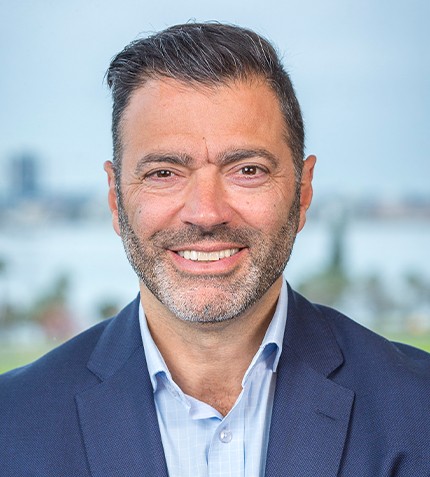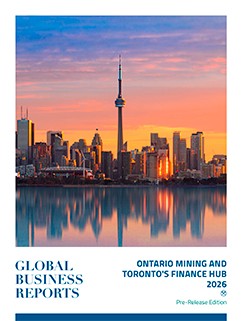
"Our strategy avoids competing in very large-volume markets dominated by distributors with extensive logistics; instead, we focus on smaller volumes and ensure tailored, reliable service."
RELATED PUBLICATION
Francisco Martínez
MANAGING DIRECTOR – MEXICO, GREENCHEM INDUSTRIES
After its first year of operations in Mexico, could you remind us of GreenChem’s presence in the country, and across Latin America?
GreenChem began operations in Mexico in June 2024, building on 18 years of activity across the US and Canada. GreenChem Mexico serves clients nationwide, from Tijuana to Cancún, supported by five strategically located warehouses. Our team, each with over 15 years of chemical industry experience, enables highly efficient logistics and reliable service across the country.
We cover most of the rest of Latin America from Florida, while Colombia, Peru, and Argentina are managed from Bogotá. In 2025, we also opened our European office in the Netherlands to serve as a hub for expansion across Europe.
What is the niche GreenChem has carved out in Mexico?
Today, most of GreenChem Mexico’s sales are delivered locally through small orders, serving both multinationals and micro, small, and medium-sized enterprises, which make up 99% of businesses in Latin America. These smaller companies require agile, tailored services, and we are committed to meeting that need. In just one year, we have grown from dozens to hundreds of orders, with thousands expected soon.
Mexico has over 400 chemical distributors, yet only about 100 are registered with ANIQ and 27 hold SARI certification. With more than 40 specialized import permits, GreenChem provides global supply access, supporting local distributors and end customers, creating significant market value.
Which key advantages have driven GreenChem’s success?
GreenChem Mexico has exceeded its forecasts three times since launch, driven by three core advantages. Firstly, operational stability and a highly skilled, efficient team supported by a robust back office in West Palm Beach allow us to generate substantially more EBITDA per employee than many major global distributors. Secondly, our digital-first strategy, implemented via Oracle NetSuite in less than three months, streamlines operations, enhances efficiency, and enables rapid scaling across countries. Lastly, strong relationships with AAA-rated suppliers and world-class logistical alliances allow us to serve both global clients and smaller customers while offering value-added logistics services.
Which are the top drivers of growth?
We offer around 500 chemical products across multiple industries in Mexico, with a focus on mass consumption, exports, and local market needs. Our strongest segments include personal care, home care, industrial care, paints, adhesives, automotive paints, water treatment, and food additives. Our strategy avoids competing in very large-volume markets dominated by distributors with extensive logistics; instead, we focus on smaller volumes and ensure tailored, reliable service.
How do you view Mexico-US relations today?
I believe Mexico has benefited from US trade policies, even under President Trump. President Sheinbaum’s government, while not without criticism, has managed relations effectively, which has helped the country. I remain optimistic regarding upcoming renegotiation of the USMCA: Any disruption is likely limited, as Mexico imports more chemicals than it exports to the U.S.
However, Mexico’s 2026 budget presents potential risks. Higher tariffs on Asian chemical imports aim to boost local production, but Mexico’s chemical industry currently relies heavily on imports, representing around 30% of total consumption, creating uncertainty for supply and pricing.
What is your view on Mexico’s Hydrocarbons Law?
Mexico’s chemical industry is facing significant regulatory challenges. While regulation is essential, overlapping rules for the same products create complexity. The Hydrocarbons Law treats all petrochemicals the same as fuel and diesel. It introduces additional requirements, including registration of all clients, transporters, and warehouses, special permits, and letters of intent for purchases and sales. Products like methanol, ethylene glycol, toluene, and isopropanol, as well as many others, would be directly affected, potentially halting imports.
I believe compliance with these new regulations would require hundreds of documents per product, an impossible task within the current timelines. This has raised serious concern across the industry, as sudden enforcement could disrupt both distribution and consumption, creating a major operational crisis.
What are GreenChem’s goals in Mexico over the next year?
GreenChem Mexico aims to increase its market share, targeting 25–30% of GreenChem’s global sales by 2027. I believe the country offers significant growth potential, as chemical imports from Asia have risen, expanding opportunities for distributors. Our certifications reflect our commitment to responsible distribution, chemical handling, and social responsibility, supporting sustainable growth in all markets. Our plan is to triple our first-year size over the next three years, while continuing growth across Latin America.











